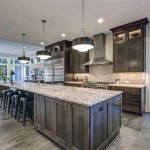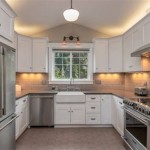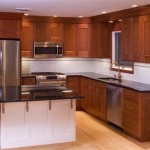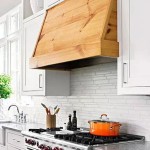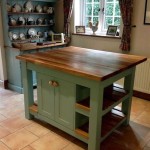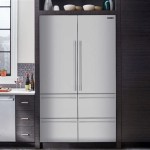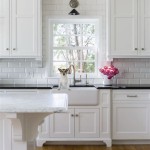Best Green Paint Colors for Kitchen Cabinets
The kitchen, often considered the heart of the home, is a space where functionality and aesthetics intertwine. Updating kitchen cabinets with a fresh coat of paint is a relatively inexpensive and impactful way to transform the room's overall ambiance. Among the myriad color options available, green has emerged as a popular choice, evoking feelings of nature, tranquility, and freshness. Selecting the "best" green paint color for kitchen cabinets, however, requires careful consideration of various factors, including the kitchen's existing elements, the desired mood, and the interplay of light and shadow.
The appeal of green lies in its versatility. It can range from vibrant and energetic to soothing and understated, making it a suitable option for a wide range of design preferences. Green also complements a variety of materials and finishes, from warm wood tones to cool stainless steel. Ultimately, the ideal green paint color will depend on the specific characteristics of the kitchen and the homeowner's individual aesthetic goals.
Understanding the Nuances of Green Paint Colors
Green is not a monolithic color; it exists along a spectrum encompassing a broad range of shades, tints, and tones. The undertones present in a particular green paint significantly influence its overall appearance and its compatibility with other elements in the kitchen. Understanding these nuances is crucial for selecting a green that harmonizes with the existing décor and achieves the desired effect.
Warmer greens, often leaning towards yellows or browns, tend to create a cozy and inviting atmosphere. These shades are particularly well-suited for kitchens with natural wood accents or warm-toned countertops. Examples include olive green, sage green, and avocado green, each offering a slightly different character. Olive green, with its subtle earthy undertones, can bring a touch of sophisticated elegance to a kitchen. Sage green, a softer and more muted option, evokes a sense of calmness and serenity. Avocado green, a bolder choice reminiscent of mid-century modern design, can add a playful and retro vibe.
Cooler greens, on the other hand, lean towards blues or grays, creating a more refreshing and contemporary feel. These shades work well in kitchens with stainless steel appliances, cool gray countertops, or a modern aesthetic. Examples include seafoam green, mint green, and emerald green. Seafoam green, a light and airy option, can create a sense of spaciousness in smaller kitchens. Mint green, with its cheerful and invigorating quality, adds a touch of freshness and vitality. Emerald green, a jewel-toned option, can create a dramatic and luxurious look.
The interplay of light and shadow also plays a crucial role in how a green paint color appears in the kitchen. Natural light tends to enhance the brightness and vibrancy of a color, while artificial light can alter its tone and intensity. It is essential to test paint samples in the kitchen under different lighting conditions before making a final decision. Consider how the color appears during the day with natural sunlight streaming in, as well as in the evening with artificial lighting. This will ensure that the chosen green remains consistent and appealing throughout the day.
Exploring Popular Green Paint Color Options
The market offers a vast array of green paint colors, each with its unique characteristics and appeal. Exploring some of the most popular options can provide inspiration and guidance for selecting the perfect green for kitchen cabinets.
Sage Green: A timeless and versatile choice, sage green offers a sophisticated and calming ambiance. Its muted undertones blend seamlessly with a variety of design styles, from traditional to modern farmhouse. Sage green pairs beautifully with natural wood finishes, creating a warm and inviting atmosphere. It also complements white or cream-colored countertops and backsplashes, creating a clean and classic look.
Olive Green: A rich and earthy tone, olive green brings a touch of sophistication and elegance to the kitchen. Its subtle yellow undertones create a warm and inviting feel, making it a suitable option for kitchens with natural wood accents or warm-toned countertops. Olive green works well with both dark and light countertops, offering flexibility in design. It can be paired with brass hardware for a touch of luxury or with black hardware for a more contemporary look.
Mint Green: A refreshing and invigorating color, mint green adds a touch of cheerfulness and vitality to the kitchen. Its cool undertones create a sense of cleanliness and spaciousness, making it a suitable option for smaller kitchens or those seeking a brighter and more airy feel. Mint green pairs well with white or light gray countertops, creating a clean and modern look. It can also be combined with pastel accents for a playful and whimsical feel.
Emerald Green: A bold and luxurious choice, emerald green brings a touch of drama and sophistication to the kitchen. Its jewel-toned hue creates a sense of opulence and grandeur, making it a suitable option for those seeking a statement piece. Emerald green works well with both dark and light countertops, offering versatility in design. It can be paired with gold or silver hardware for a touch of glamour or with black hardware for a more contemporary look.
Hunter Green: A deep and classic green, hunter green exudes a sense of warmth and tradition. It works exceptionally well in kitchens aiming for a rustic or traditional aesthetic, especially when paired with natural wood elements and brass hardware. This color conveys a sense of grounded stability and enduring style.
In addition to these popular options, there are many other green shades to consider, such as seafoam green, chartreuse, and forest green. Testing paint samples in the kitchen is crucial for visualizing how the color will appear under different lighting conditions and against the existing décor.
Factors to Consider When Choosing a Green Paint Color
Selecting the "best" green paint color for kitchen cabinets is a highly personal decision that depends on various factors. Careful consideration of these factors will help ensure that the chosen green complements the existing kitchen elements and achieves the desired aesthetic.
Kitchen Size and Layout: The size and layout of the kitchen play a significant role in determining the appropriate green paint color. In smaller kitchens, lighter shades of green, such as seafoam green or mint green, can help create a sense of spaciousness and airiness. Darker shades of green, such as emerald green or hunter green, may make a small kitchen feel cramped or overwhelming. In larger kitchens, darker shades of green can be used to create a more dramatic and intimate atmosphere. The layout of the kitchen, including the placement of cabinets and appliances, should also be considered when selecting a green paint color. Consider how the color will flow throughout the space and how it will interact with the existing architectural features.
Existing Décor and Materials: The existing décor and materials in the kitchen, such as countertops, backsplashes, flooring, and appliances, should be taken into account when selecting a green paint color. The chosen green should complement these elements and create a cohesive and harmonious look. For example, if the kitchen has warm-toned countertops, such as granite or marble, warmer shades of green, such as olive green or sage green, may be a better choice. If the kitchen has cool-toned countertops, such as quartz or stainless steel, cooler shades of green, such as seafoam green or mint green, may be more suitable. Also, consider the metal finish on the appliances and hardware. Stainless steel complements cooler greens, while brass or copper pairs nicely with warmer greens.
Desired Mood and Style: The desired mood and style of the kitchen should also influence the choice of green paint color. If the goal is to create a calming and relaxing atmosphere, softer and more muted shades of green, such as sage green or seafoam green, may be the best option. If the goal is to create a more vibrant and energetic atmosphere, brighter and bolder shades of green, such as mint green or emerald green, may be more appropriate. Consider the overall style of the kitchen, whether it is traditional, modern, farmhouse, or eclectic, and select a green that complements that style. A traditional kitchen might benefit from a classic hunter green, while a modern kitchen might look stunning with a bold emerald green.
Lighting Conditions: The amount and type of lighting in the kitchen significantly affect how a green paint color appears. Natural light tends to enhance the brightness and vibrancy of a color, while artificial light can alter its tone and intensity. It is essential to test paint samples in the kitchen under different lighting conditions before making a final decision. Consider how the color appears during the day with natural sunlight streaming in, as well as in the evening with artificial lighting. Pay attention to the color temperature of the light bulbs, as warm light can make a green appear more yellow, while cool light can make it appear more blue.
By carefully considering these factors, homeowners can confidently select the best green paint color for their kitchen cabinets, creating a space that is both functional and aesthetically pleasing.

Best Green Paint Colors For Kitchen Cabinets So Much Better With Age

The Best Green Paint Colors Beautiful Kitchen Cabinets Cabinet Inspiration Painted

The Best Green Paint Colors Painted Kitchen Cabinets Cabinet Design

Green Kitchen Cabinet Inspiration Best Paint Colors Farmhouse Living

9 Green Paint Colors To Consider For Your Kitchen

14 Green Kitchen Cabinet Ideas 2024 Top Paint Colors For Kitchens

14 Green Kitchen Cabinet Paint Colors We Swear By Domino

Green Kitchen Cabinet Inspiration Best Paint Colors Farmhouse Living Cabinets Remodel

Best Green Paint Colors For Kitchen Cabinets So Much Better With Age

14 Green Kitchen Cabinet Ideas 2024 Top Paint Colors For Kitchens
See Also

